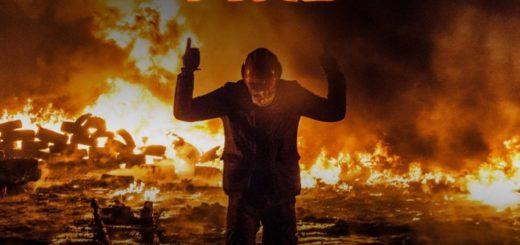By Dr. Mercola
In the U.S., when people hear the word “asbestos,” the first thing that comes to mind is cancer. So, it may surprise you that this way of thinking is not universal, particularly in Russia where the asbestos industry is not only alive, but thriving. The term “asbestos” is used to describe six types of asbestos minerals: chrysotile, amosite, crocidolite, tremolite, anthophyllite and actinolite — all of which are carcinogenic to humans.1
Asbestos, a naturally occurring mineral used worldwide in a variety of commercial products, is so toxic that even low-level exposure can cause lung cancer and other terminal diseases, including mesothelioma, a rare but aggressive form of cancer that can develop in the lungs, stomach or heart. Victims who contract this disease have a very low survival rate.2
Although many believe asbestos production is a thing of the past, the world’s asbestos industry remains profitable in many nations including in the U.S., Russia, China and India. The featured film, an episode of VICE Reports titled, “Why the Deadly Asbestos Industry Is Still Alive and Well,” reveals that despite the health dangers, 2 million tons of asbestos are exported every year to the developing world, where it’s highly unregulated and poses serious health risks.
In the film, VICE correspondent Milène Larsson travels to the world’s largest asbestos mine in Asbest, Russia. Asbest, which is Russian for “asbestos,” lies on the eastern slopes of the Ural Mountains and is home to 70,000 people — nearly all of whom are financially dependent on the asbestos mine.
Russian Mining Town Showcases Its Pride for Asbestos
Asbestos, which occurs as a long thin fiber in the environment, kills more than 100,00 people each year and is banned in 60 countries.3Yet, Russia remains the world’s largest producer, exporting more than half of the world’s asbestos supply. If asbestos is so toxic, why is it still being used? What health effects are workers and residents living near asbestos mines experiencing?
VICE reporter Larsson set out to answer these questions and more by traveling to Asbest, Russia, where she observed firsthand the mining industry’s powerful influence over the city and its citizens. Seventy percent of the income in Asbest is dependent on the mine, she reports, which is owned by the Russian mining company Uralasbest. In Asbest, the asbestos industry is king.
The city’s pride for the industry can be seen in large asbestos-promoting banners hung all over town. Asbest even has an asbestos-themed anthem and a monument made of asbestos, symbolizing the city’s strange admiration for the deadly carcinogen. The first place Larsson visits is the asbestos mine, where half a million tons of asbestos are mined each year.
She is seen standing at the edge of the mine, which is about half the size of the island of Manhattan,4 wearing head-to-toe protective gear — what’s legally required in the U.S. and Europe when exposed to asbestos.
Locals, on the other hand, are seen in plain clothes, marveling at the view of the mine as if it’s their favorite pastime. The locals point and laugh at Larsson’s hazmat suit, making light of what they perceive to be overly cautious attire. “Are you not worried about the dust and asbestos fibers coming out of the mine?” she asks. “No, we’re not worried about anything in general,” they reply. “Things happen to you only when you are afraid of them.”
Russia Embraces Asbestos Despite Health Risks
Despite their remarks, the scientific literature overwhelmingly states that all levels of asbestos exposure may cause asbestos-related disease, and there is no safe level of exposure according to the National Institute for Occupational Safety and Health.5 It’s clear that the people of Asbest are not afraid of the mine, however. In fact, it’s viewed as a popular tourist attraction and a hot spot for taking wedding photos.
To showcase its long history with asbestos, the city has an asbestos history museum, which the VICE reporter visits to get a better handle on the community’s relationship with the asbestos industry.
The historian tells Larsson that Russia’s first asbestos depository was discovered in 1720 by a peasant named Safron Sagra, whose wife is said to have made mittens out of the mineral after he brought it home one night. According to the legend, the couple discovered the fireproof properties of asbestos after the mittens caught fire but did not burn.
News of the mineral’s value quickly spread, and by 1918, all of the mines were nationalized and owned by the Russian government. Entire economies were soon built around the asbestos industry, which employs 38,500 Russians. Another 400,000 depend on the asbestos mines for their livelihood, according to The New York Times, which adds:6
“Asbest is a legacy of the philosophy known as gigantism in Soviet industrial planning. Many cities wound up with only one, huge factory like this town’s sprawling asbestos plant. The cities, known as monotowns, were an important engine of the economy.
A Russian government study counted 467 cities and 332 smaller towns that depend on a single factory or mine. A total of 25 million people out of Russia’s population of 142 million people live in towns with only one main industry that cannot close, even if it is polluting.”
Today, locals describe a layer of asbestos dust that covers everything from their homes to their vegetable gardens. Yet, many seem unafraid of the health risks of asbestos and instead have accepted the contamination as a way of life.
Good Luck Finding the Truth: Locals in Asbest Are Reluctant to Discuss Health Effects
Determined to speak with someone about the true health effects of asbestos, Larsson meets with a retired mine worker who says he is skeptical of the mineral, but admits it’s impossible to know how many workers have been sickened by the mine. “Factories are too proud to admit that,” he says.
Discouraged by the locals’ refusal to talk candidly about the dangers of asbestos, Larsson wonders whether physicians and officials in Russia are aware of the health risks posed to workers and residents living near asbestos mines. So, she visits the Ural Oncology Center in Yekaterinburg, Russia, to meet with oncologist Dr. Sergey Berezin.
Berezin says the most common types of cancer he sees are lung cancer in men and breast cancer in women, but he denies having patients sickened from asbestos. As if that weren’t shocking enough, the oncologist admits that he completed his medical residency in the asbestos mining town and found the air to be “quite satisfying.”
He then leads Larsson to his office where he shows her decorations made from asbestos before stating that his sauna roof in the summer home he’s owned for 30 years is made from asbestos. Larsson, whose face is frozen in shock, asks to speak to some of Berezin’s patients, but he refuses. So, she heads to the local hospital in Asbest, but getting patients to talk negatively about asbestos proves difficult.
However, one women is heard saying: “You won’t find the real truth anywhere. Who will say? Everyone is afraid.” It quickly becomes clear that no one in Asbest is willing to speak negatively about the mine. The whole town relies on the industry, says Larsson, adding that the mining company owns everything down to the schools, churches and even the soccer team.
World Health Organization Asbestos Researcher Has Industry Ties
Hoping to escape the industry’s influence in Asbest, Larsson travels to Moscow to meet with the head of the Russian Academy of Medical Sciences, Dr. Evgeny Kovalevskiy, who is researching worker health in Asbest on behalf of the World Health Organization (WHO). When asked if it’s dangerous to live next to an asbestos mine, he replies, “Life is dangerous. It is hard to measure asbestos’ role because the Sverdlovsk Region is nearby and is very industrial. They have serious ecological problems.”
Larsson asks Kovalevskiy what his eight years of research has found about the health effects of asbestos, but he again dodges the question saying that like any epidemiological study, the “final results will take years.” Larsson wonders whether his reluctance to answer is a result of his alleged industry ties. In March 2013, a group of acclaimed scientists petitioned the WHO to end their relationship with Kovalevskiy over ethical questions surrounding his ties to the asbestos industry.
“We call on you to terminate IARC’s collaboration with the Scientific Research Institute of Occupational Health of the Russian Academy of Medical Sciences (RAMS) and with Dr. Evgeny Kovalevskiy because of unethical and improper scientific conduct on their part — conduct which is incompatible with the standards expected of IARC or any reputable scientific agency.”7
Developing World Faces an Epidemic of Asbestos-Related Disease
Russia is so protective of its asbestos industry that it has stopped recording mesothelioma as a separate type of cancer and is instead lumping it in with other diseases so that it’s no longer identifiable, says Dr. Arthur Frank, professor and chair emeritus of environmental and occupational health at Drexel University. But the absence of data doesn’t mean the absence of disease, he says, adding that the asbestos industry is using similar tactics as Big Tobacco in terms of concealing the industry’s health risks.
These tactics seem to be working in countries like China and India, which rely heavily on asbestos for building insulation and materials and automotive parts. In India, the asbestos industry provides 300,000 jobs and is worth $2 billion.8 The nation is also the world’s largest importer of asbestos, the majority of which it buys from Russia.
Frank predicts that the developing world is on the brink of an epidemic caused by asbestos-related diseases. While the U.S. is not immune to the dangers of asbestos, as it too has seen an epidemic of asbestos-related diseases, it’s nothing like what we will see in the developing world, he says.
Thousands of American Products Made With Asbestos
Similar to Russia today, the U.S. once had a booming asbestos industry, mining 137,000 tons at its peak in 1973.9 Deemed the “magic mineral,” asbestos was used in thousands of American products. It was heavily used by the military to insulate and fireproof ships, tanks, aircrafts and vehicles. The military relied on the mineral so extensively that 33 percent of mesothelioma victims in the U.S. are military veterans.10
However, no one was more affected by the deadly mineral than the residents of Libby, Montana, where asbestos killed hundreds and sickened thousands. The city is home to one of America’s worst man-made environmental disasters, notes the film. In 1919, companies began pulling vermiculite, which is often found alongside tremolite — a form of asbestos — from the mine in Libby, Montana. Known commercially as zonolite, vermiculite was used in a variety of construction materials including as insulation for homes and buildings.
The Environmental Protection Agency estimates that vermiculite was installed in more than 35 million American homes. Decades of mining vermiculite exposed workers and residents to toxic asbestos dust. The film shows Larsson traveling to Libby to speak with victims sickened by asbestos. “I just think I’ve been cheated.
They should’ve warned the people in this town about the seriousness of it. They got away with murder,” says Libby resident Don Munsel, who never worked in the mine but was exposed to asbestos dust carried in from his stepfather who worked in the mine.
Libby Residents Describe the Horror Caused by Asbestos
Larsson also talks with former mine workers Dean and Marilyn Norton who express anger and frustration with W.R. Grace, the company that owned the mine. “As beautiful as this country is, it killed us,” says Marilyn. “I know it’s going to kill me, and it’s probably going to kill my kids and my husband too,” she says, adding that it’s really W.R Grace that’s responsible. “They knew.”
The asbestos mined in Libby is a different kind than what’s mined in Russia. However, studies show conclusively that all types of asbestos cause cancer. Asbestos is a criminal industry, says Nicholas Ashford, a professor at MIT and former chair of the National Advisory Committee on Occupational Safety and Health.
Fifteen epidemiological societies say the asbestos industry should have been regarded as a hazard, he tells Larsson in the film. “When you disregard worker and public health, you’re committing murder,” says Ashford. “You can argue you don’t know which worker you’re murdering, but as a whole, the statistics are very clear.”
Many American Products Still Contain Asbestos
Asbestos is banned in many countries, but the U.S. isn’t one of them. While it’s not as widely used as it once was, asbestos is permitted in many American products as long as it consists of less than 1 percent asbestos.11 Some of these products include gaskets, roofing and fireproofing materials.
In 1973, the U.S. Environmental Protection Agency started banning asbestos-containing products. In 1989, the agency banned most asbestos-containing products under Section 6 of Toxic Substances Control Act. But in 1991, the “rule was vacated” by the courts. As a result, most of the original ban on the manufacture, importation, processing or distribution of asbestos products was overturned.
Asbestos-containing products that are still legal in the U.S. include clothing, pipeline wrap, vinyl floor tire, friction materials, roof coatings and brake blocks. Asbestos-containing products that are now banned in the U.S. include corrugated paper, rollboard, commercial paper, specialty paper and flooring felt.12 While the last asbestos mine closed in 2002, the U.S. still imports about 1,000 tons of asbestos, most of which comes from Brazil.13
Asbestos’ Useful Properties Captivates Humans Throughout History
Throughout history, asbestos and its unique properties has captivated the attention of humans. Its original use dates back to the ancient Greeks, who valued the mineral for its fireproof properties. The word “asbestos” actually means “indistinguishable” in ancient Greek. The Greeks used the mineral in the wicks of their eternal flames, and wove the material into garments, napkins and table cloths, which they would throw into the fire and marvel at its unique ability to emerge clean and unburned.14
Despite its harmful properties, the mineral is still used all over the world. American homes built before 1980 still contain asbestos, which can be found in floor tiles, roofs, furnaces, plumbing, appliances, fireplaces and window caulking. People are often exposed when the fibers become dislodged over time due to normal wear and tear.
The U.S. is one of the only developed nations that has not completely banned asbestos. The mineral is prohibited in the EU, U.K. and Australia — with Canada next on the list to phase the mineral out completely by 2018. Attempts to ban asbestos in America have been squashed by the asbestos industry, which cites job losses and negative economic effects as reasons to keep the industry alive.
How to Protect Yourself Against Asbestos
Fortunately, there are ways to protect yourself against asbestos exposure. Those most often exposed to asbestos are construction workers who come across the material when working in homes or buildings where it was installed prior to today’s regulations. If you suspect you’ve encountered asbestos, stop working and notify professionals. The safest way to handle asbestos is through a licensed contractor. However, if this isn’t possible, taking the following steps can reduce your exposure:15
- Wear protective gear including a suitable face mask
- Use hand tools instead of power tools to reduce dust
- Clean up as you go to prevent waste buildup
- Use a Type H vacuum or wet rags to clean up; do not sweep up dust and debris
- Wash before breaks and before going home













